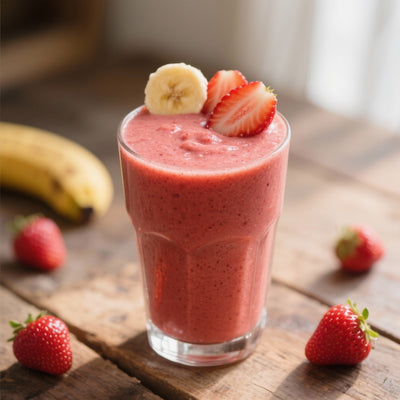Why Does Eliminating Salt Increase Your Cardiovascular Risk: Myth or Reality?
Salt, or more precisely sodium, has long been demonized due to its association with high blood pressure and cardiovascular disease. Official recommendations often advocate a drastic reduction in salt intake. But what happens if we go too far in this direction? Is there a risk in completely eliminating salt from our diet? This article explores the nuances of the relationship between salt and cardiovascular health, drawing on scientific studies and factual data.
We will take a close look at why sodium is essential for the proper functioning of our bodies, how a lack of salt can have detrimental effects on our cardiovascular health, and what the optimal recommendations are for a balanced salt intake. It is crucial to understand that, as with many things in nutrition, moderation is key.
The Essential Role of Sodium in the Body
Sodium is a vital electrolyte that plays a crucial role in many physiological functions. It helps regulate fluid balance, blood pressure, nerve transmission, and muscle contraction. Without sufficient sodium intake, these essential processes can be disrupted.
- Fluid Balance: Sodium helps maintain fluid volume in the body, which is essential for nutrient transport and waste removal.
- Blood Pressure: Sodium influences blood volume and blood pressure. An imbalance can lead to hypotension (low blood pressure) or hypertension (high blood pressure), depending on the context.
- Nerve Function: Sodium is essential for the transmission of nerve signals throughout the body.
- Muscle Contraction: Sodium, in collaboration with potassium and calcium, allows muscles to contract properly, including the heart muscle.
The Risks of Hyponatremia (Sodium Deficiency)
Hyponatremia is a condition characterized by an abnormally low level of sodium in the blood. It can occur when sodium intake is insufficient, or when the body loses too much sodium through excessive sweating, vomiting, diarrhea, or certain medications. Symptoms of hyponatremia can range from mild to severe and include:
- Nausea and vomiting
- Headaches
- Confusion
- Muscle weakness, spasms or cramps
- Epileptic seizures
- In severe cases, coma and even death can occur.
A study published in the European Heart Journal revealed that insufficient sodium intake (less than 2.5 grams per day) was associated with an increased risk of cardiovascular mortality. It is important to note that this study, like many others, emphasizes the importance of moderate sodium intake, rather than excessive restriction. Moderation is key, as is often the case in nutrition.
The Paradox of Salt and Cardiovascular Disease
Although excess salt is recognized as a risk factor for hypertension, it is crucial to understand that the relationship between salt and cardiovascular disease is complex and multifactorial. Several studies have highlighted a surprising phenomenon: very low salt consumption may be associated with adverse effects on cardiovascular health.
An analysis of several studies published in the Journal of the American Medical Association (JAMA) suggested that excessive salt restriction could lead to increased blood cholesterol and triglyceride levels, as well as insulin resistance—all cardiovascular risk factors. However, it is crucial to note that these findings are controversial and further research is needed to confirm them.
"Balance is key. Not too much, not too little. A moderate sodium intake is necessary to maintain good cardiovascular health." - Dr. Cardiologist, University of Health.
Current Recommendations and How to Interpret Them
Official recommendations for salt intake vary between organizations and countries. The World Health Organization (WHO) recommends no more than 5 grams of salt per day (approximately 2 grams of sodium). However, it is important to consider these recommendations within the broader context of diet and lifestyle. An active person who sweats a lot may need a slightly higher sodium intake than a sedentary person.
It is also crucial to distinguish between salt added to processed foods and salt naturally present in foods. The majority of our salt intake comes from processed foods, ready-made meals, and fast food. Reducing consumption of these foods is an effective strategy for controlling sodium intake. Choosing fresh foods, cooking at home, and carefully reading nutrition labels are important steps.
How to Balance Your Salt Intake for Optimal Cardiovascular Health
Here are some practical tips to balance your salt intake and promote good cardiovascular health:
- Choose fresh, unprocessed foods: Fruits, vegetables, whole grains, and lean proteins naturally contain little sodium.
- Cooking at home: This allows you to control the amount of salt you add to your dishes.
- Use herbs and spices: Flavor your dishes with herbs, spices, lemon juice or vinegar to reduce your salt dependence.
- Read nutrition labels carefully: Pay attention to the sodium content of processed foods and choose the lowest sodium options.
- Be aware of your level of physical activity: If you are very active and sweat a lot, you may need a slightly higher sodium intake.
- Consult a healthcare professional: If you have any concerns about your salt intake, talk to your doctor or a nutritionist.
In conclusion, the relationship between salt and cardiovascular health is complex and nuanced. While excessive salt intake is clearly associated with an increased risk of hypertension, excessive salt restriction could also have detrimental effects. Balance is key. It's important to adopt an individualized approach, taking into account your level of physical activity, overall health, and dietary preferences. By prioritizing fresh, unprocessed foods, cooking at home, and paying attention to nutrition labels, you can control your salt intake and promote optimal cardiovascular health. Don't hesitate to consult a healthcare professional for personalized advice.











